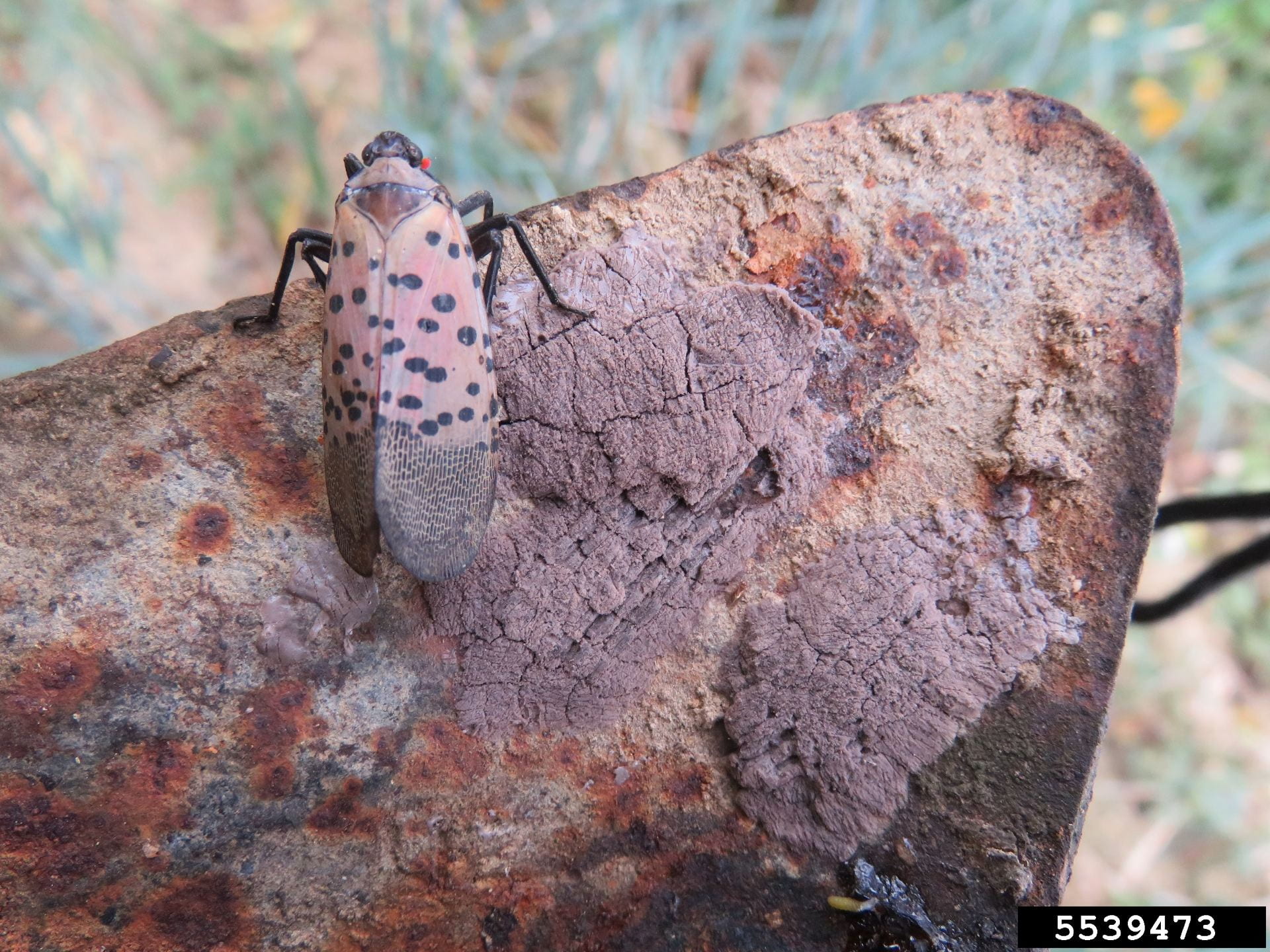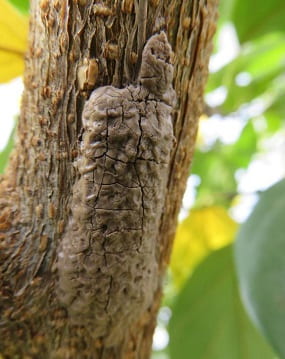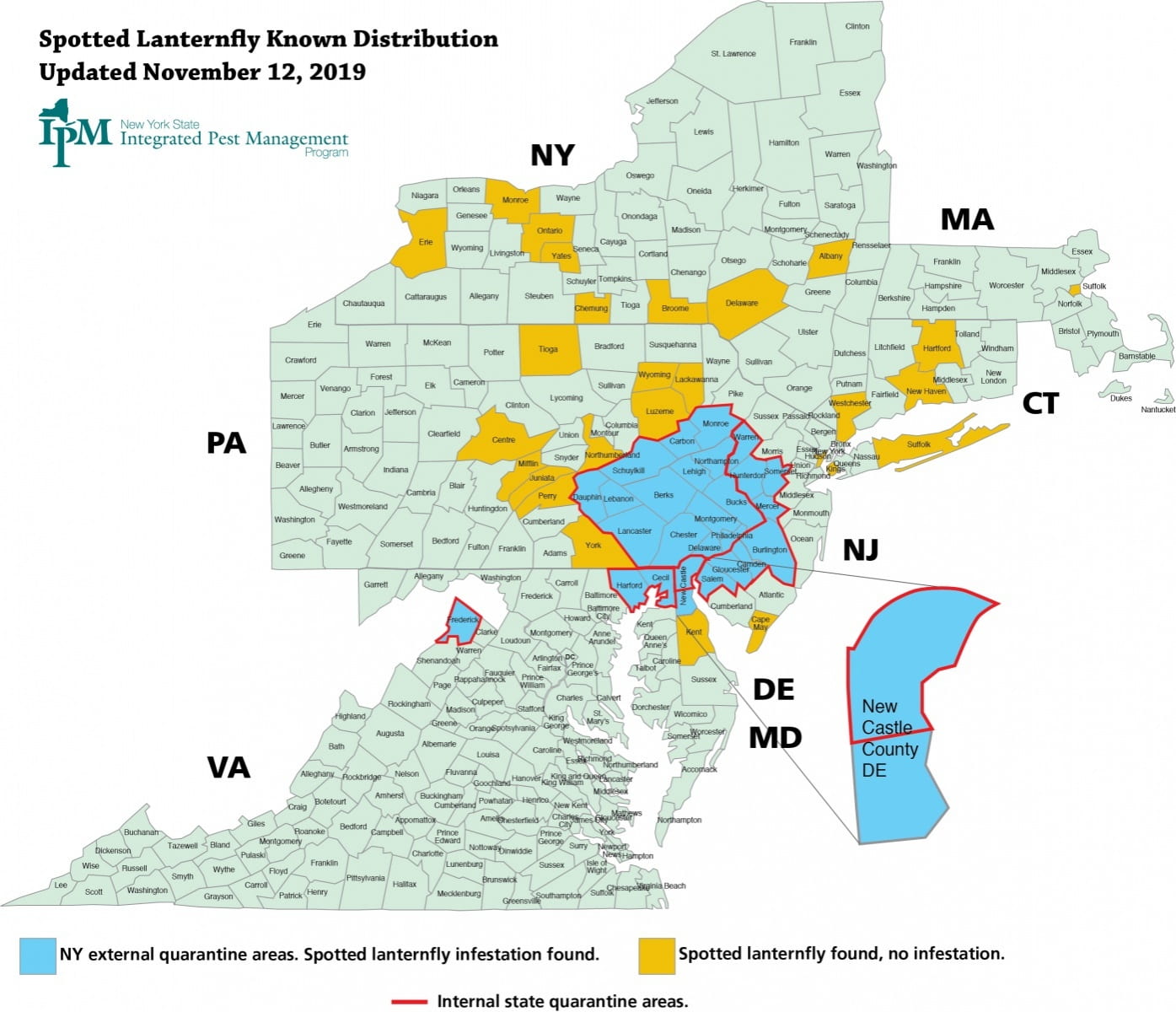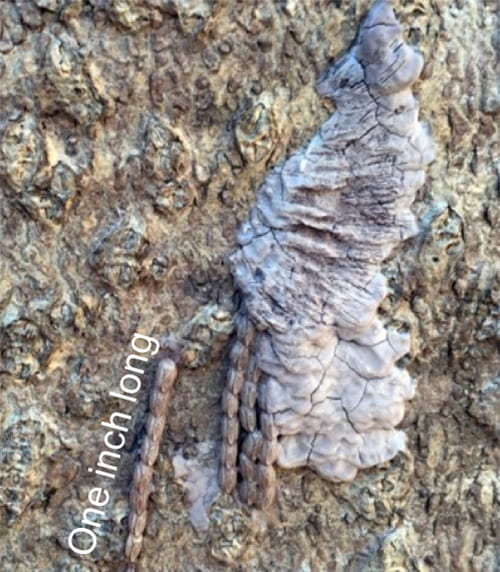by Ryan Parker and Brian Eshenaur
When choosing the perfect tree, people usually consider variety, size, and shape. But with the phenomenon of a new invasive planthopper, Spotted Lanternfly (Lycorma delicatula) (SLF), the tree’s origin may be something to think about.
We always suggest fresh-cut trees from New York’s many great tree farms!
First of all, we’ll say it’s unlikely that SLF will be on your cut tree. Conifers are not a food source for this pest, but egg-laying females are indiscriminate as to where eggs are placed. That’s why we offer a list for travelers making their way through quarantined areas.

Print this list and keep it in your vehicles!

At this time of year, winter has killed off adults, but their hardy egg masses remain. Although ornamental in appearance, Spotted Lanternfly is one “ornament” you don’t want hatching from their mud-like egg masses and decorating your property this coming spring. SLF causes economic damage to agriculture, forestry and tourism, and is a major nuisance to homeowners. Learn more by visiting our SLF website!
We bring this up because the SLF quarantined areas of Pennsylvania (shown in blue on the map below) happen to be home to many Christmas tree farms (Berks, Bucks, Carbon, Chester, Dauphin, Delaware, Lancaster, Lebanon, Lehigh, Monroe, Montgomery, Northampton, Philadelphia, and Schuylkill).

If you’re buying a pre-cut Christmas tree, ask the seller where their trees came from. If it’s from PA, learn about this pest and inspect the trunk. But don’t stop there. Get into the habit of citizen science! “Scouting” (actively knowing how, why, and where to look) for pests gives you a critical role in stopping the spread.

What else can you do?
There are plenty of cut-your-own farms in New York with family-friendly atmosphere where you can get a fresh tree. If you don’t have time for a cut-your-own experience, ask your tree sellers if they’re aware of SLF risk on out-of-state trees. Awareness is key!

Here’s some Christmas Tree tips from our own Christmas Tree expert, IPM’s Brian C. Eshenaur:
2019 was an excellent growing season for Christmas Trees. We had more moderate summer temperatures and good rainfall this year. Those suitable growing conditions allowed trees to put on healthy new growth, and the fine weather gave Christmas tree growers good conditions to prune trees so they will be in great shape for harvest. This year’s early-November cold snap was also beneficial in “setting” the needles which is good for longer needle retention in some tree species.
Once in a while we hear from people concerned about the “single use” aspect of real Christmas trees. But considering the alternative of a plastic tree produced, then shipped from overseas, (and eventually ending up in a landfill), real trees have their benefits. They are a renewable resource and by buying locally you are supporting growers that will continue to maintain their fields which are part of the greenspace we all value.
Choose a variety and shape that fits your needs. Many growers are producing a wide variety of firs, spruces and even old-fashioned pines. Each variety tree offers its own shape, color, fragrance, and even branch stiffness which is important to consider for holding ornaments.
Trees always look smaller in the field so don’t forget the tape measure. Measure the floor to ceiling height before you go tree shopping and then while choosing so you end up with a tree that fits nicely into your home.
Don’t be afraid to bend the branches and shoots. Green needles should not come off in your hands. Also, the shoots should be flexible. Avoid a tree if the needles are shed or if the shoots break instead of flexing.
If possible, make a fresh cut on the bottom so the tree’s vascular tissue (pipe work) is not plugged and the tree can easily take up water. Then, if you’re not bringing it into the house right away, get the tree in a bucket of water outside.
Once you move your tree inside the house, don’t locate it next to a radiator, furnace vent or other heat source. And always remember to keep water in the tree stand topped off, so it never goes below the bottom of the trunk.
Whatever you choose to do, enjoy your “Holly Jolly Christmas” and hopefully “it’s the best time of the year.”

Cheers from all of the NYSIPM staff.